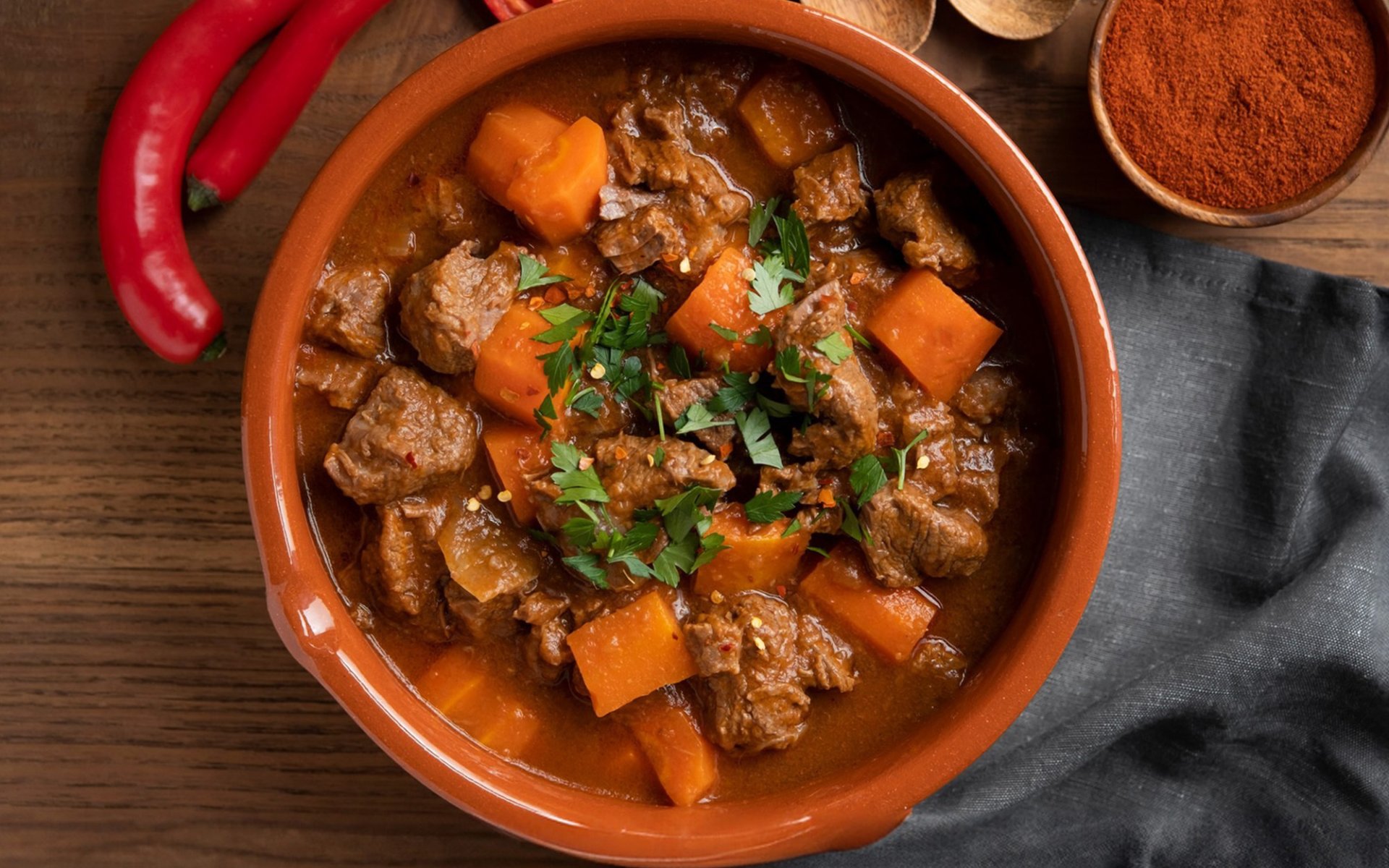Goulash

Hungary is a landlocked country located in Central Europe. Consequently, much of Hungarian cuisine, including Goulash, primarily utilizes meats like beef and lamb. Its rich, aromatic flavor comes from characteristic spices such as paprika, oregano, rosemary, and bay leaf. Today, Rimping Supermarket invites you to explore this famous Hungarian beef stew.
Goulash : From Herders' Food to Hungarian National Dish
Goulash is a Hungarian beef stew whose origins trace back to the Magyar (MAH-jahr) herdsmen in the 9th century. The name Goulash itself comes from the Hungarian word Gulyás (GOO-yahsh), meaning herdsman or cowboy.
Historically, these herdsmen would prepare simple yet highly nutritious meals to provide energy and warmth outdoors. They would tenderly stew beef with onions and paprika in large iron cauldrons over an open fire, a convenient method for cooking large batches.
Over time, Goulash underwent culinary transformations, incorporating new ingredients and techniques. The addition of bell peppers, carrots, and potatoes enhanced the flavor, added natural sweetness, and introduced new textures to Goulash, leading to the recipe that is closely recognized and loved today.
Widespread Adoption and Diversification: Goulash Globally
In the 19th century, as Hungarian immigrants began to travel across Europe, they carried their beloved beef stew recipe with them. They then introduced it to urban populations in other areas, such as Austria, Germany, and other neighboring countries, quickly making Goulash widely known and popular.
Subsequently, Goulash was adapted into various forms, with each country adding its unique touch and flavor profile:
In Austria: There is a version called Gulaschsuppe (GOO-lash-zoo-peh), which is typically a thinner soup and often served with small flour dumplings (Nockerl) or noodles.
In Germany: A version called Gulasch often includes caraway seeds and sour cream to enhance its aroma, richness, and texture.
Beyond Europe, Goulash also became known in the United States. It gained popularity in Midwest households, where it was adapted into new variations. These often include ground beef, macaroni, and tomato sauce, and Americans commonly refer to this simplified, one-pot stew as American Goulash.
Goulash in the 21st Century: An Enduring Cultural Heritage
In the 21st century, Goulash continues to captivate food enthusiasts worldwide and has become a vital cultural heritage in Hungary. The Hungarian government itself recognizes the cultural value of Goulash and has submitted an application to UNESCO for Goulash to be recognized as an Intangible Cultural Heritage. This demonstrates the profound importance of this dish as a symbol of the nation's identity and history.


